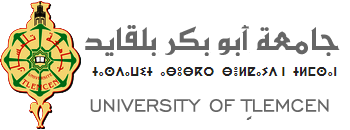Valorisation Des Microalgues Par Extraction Et Séparation Des Molécules Bioactives
Résumé: Microalgae represent an important source of valuable bioproducts (such as food, nutraceuticals, antioxidants, and pigments) and biofuel. There is thus an urgent need to develop an appropriate separation and purification technologies. In this work, microalgae harvested in the Hammam Boughrara dam, situated in Tlemcen (north-west of Algeria), were used as source to recover and fractionate bio-derived molecules using membrane-assisted processes. Thus, an evaluation of the bioactive compounds in addition to the antioxidant activity was performed, on the other hand, a separation/purification of the main compounds of this biomass was carried out using membrane-assisted method. The microalgal mixture studied shows a variety of natural antioxidant molecules such as polyphenol, flavonoids as well as pigments. In addition, modest antioxidant properties, confirmed by the determination of the correlation factor indicating a strong contribution of polyphenols by an antiradical power (Test of DPPH•); and a good ability of carotenoids and flavonoids, containing the extracts, to inhibit the peroxidation of β-carotene; as well as with a very significant reducing power of the three molecular groups studied (polyphenols, flavonoids and carotenoids). The results obtained also allowed the identification of four phenolic compounds "Gallic Acid, Catechin, Syringic and Naringinine" in the methanolic extract which reveals more effective antioxidant agent compared to the other extracts studied. On the other hand, an appropriate strategy to fractionate biomolecules using ultrafiltration (UF) has been developed after the selection of an effective cell desruption method. To maintain a stable permeate flux it was necessary to decrease the complexity of the solution prior to UF. This was achieved by separating triglycerides (TAGs) and pigments after cell disruption by solid-liquidliquid extraction with an green solvent. The UF of the remaining aqueous phase allowed a recovery factor of 70% of the proteins and more than 85% of the carbohydrates in the retentate. TAGs not recovered in the alternative solvent, remaining in the aqueous phase were separated in the permeate with a purity of about 70% and a recovery factor of about 60%.
Mots-clès:
Nos services universitaires et académiques
Thèses-Algérie vous propose ses divers services d’édition: mise en page, révision, correction, traduction, analyse du plagiat, ainsi que la réalisation des supports graphiques et de présentation (Slideshows).
Obtenez dès à présent et en toute facilité votre devis gratuit et une estimation de la durée de réalisation et bénéficiez d'une qualité de travail irréprochable et d'un temps de livraison imbattable!


